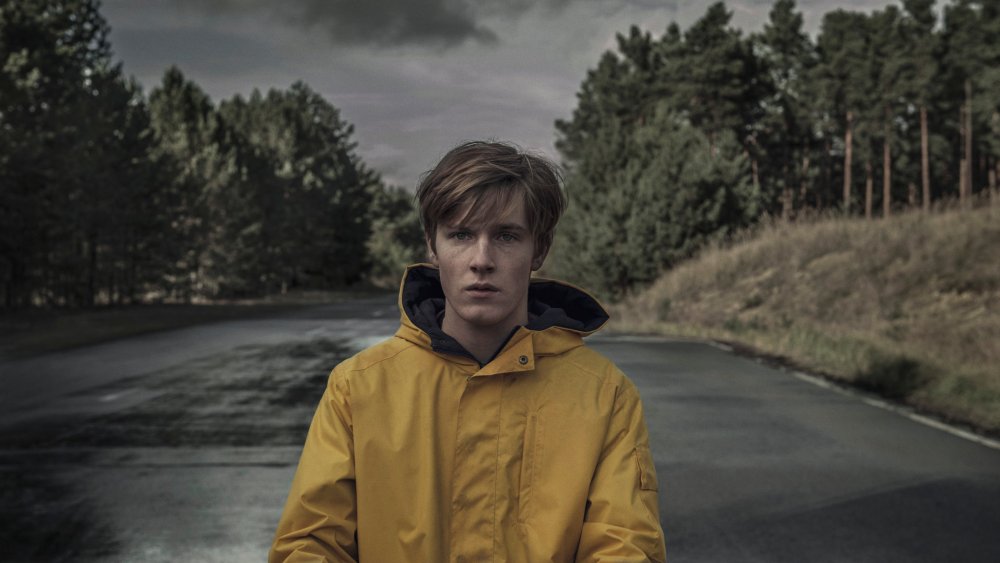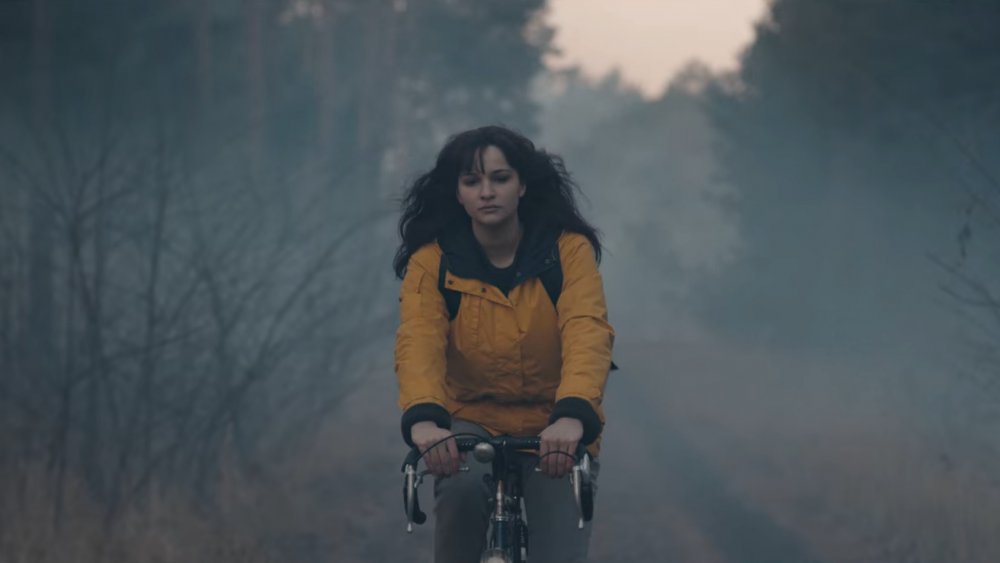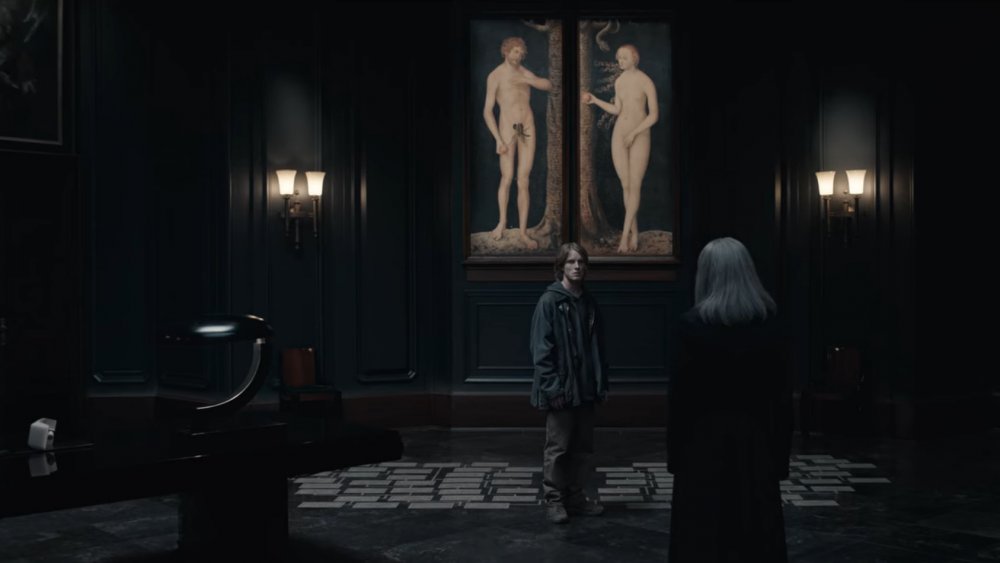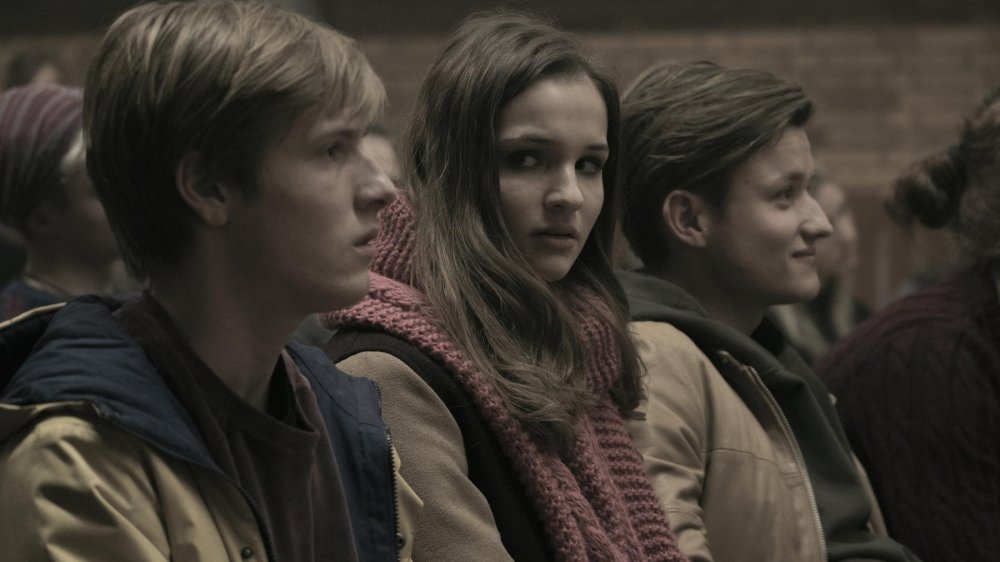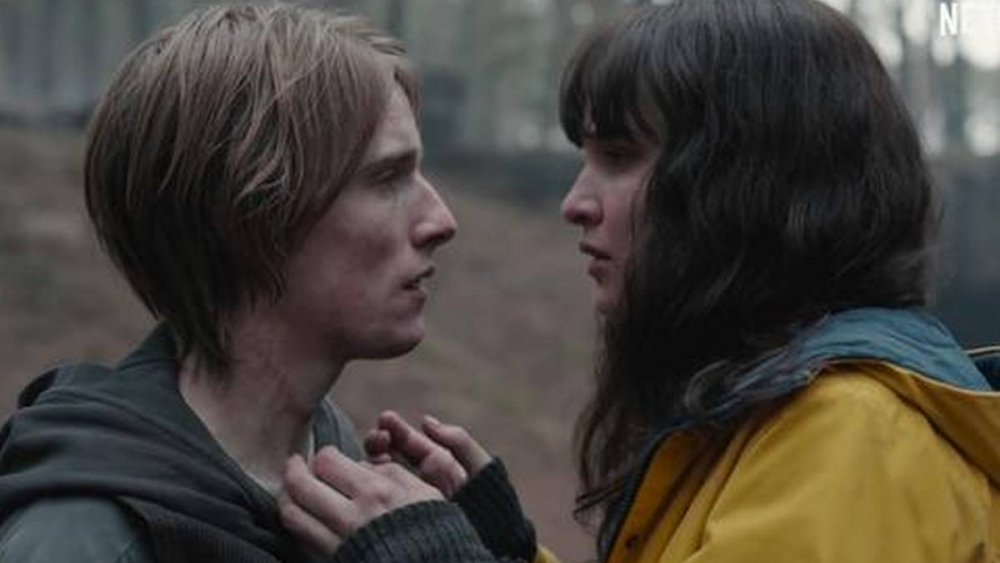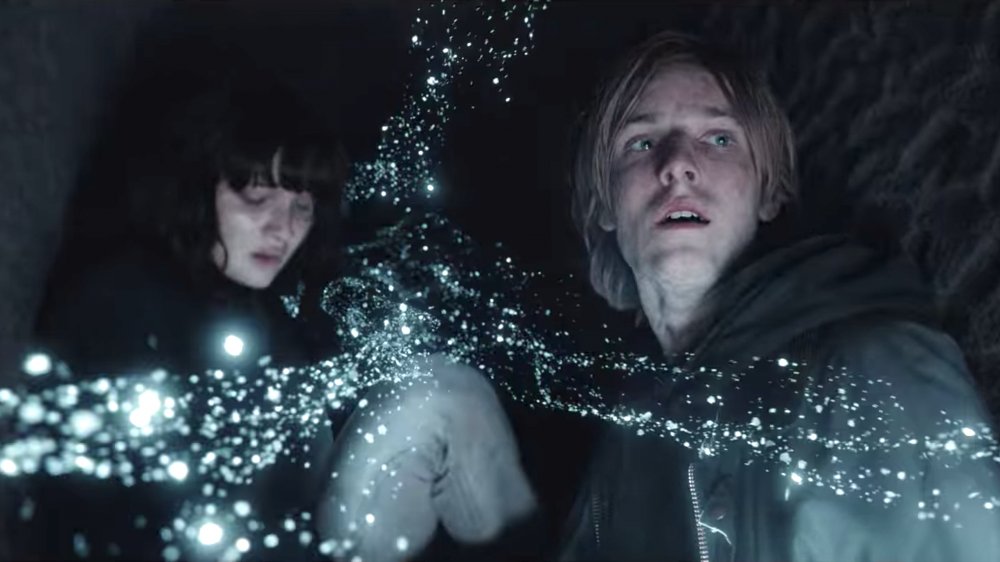The Ending Of Dark Season 3 Explained
After three seasons of timeline shattering storytelling, the Netflix original series Dark has come to an end. More importantly, it pulled off a finale that managed to resolve many of the mysteries of its narrative, while leaving just enough ambiguity for viewers to chew on after the credits rolled. For a show that featured — not only alternate timelines — but multiple dimensions, family trees that looked like a pit of snakes eating their own tails, and more time paradoxes than you could shake a container of nuclear waste at, that is quite the impressive feat.
Of course, Dark's narrative has been so complex over the course of its run that many viewers will probably still need an assist with mapping out exactly what happened on the show's conclusion. Fear not, because we've broken down the major events that explain the end to this incredible sci-fi drama. We're sticking with the broader narrative beats; if we tried to explain how the story wraps up for every Bartosz, Magnus, and Jana on the show, the article would be long enough to create its own time paradox.
Without further auf wiedersehen, here's Dark season 3's ending explained.
Season 3 of Dark introduced us to another world
Instead of tying up some loose ends, season 2 of Dark only unraveled everything further by revealing that the citizens of the German town of Winden exist across multiple universes. We begin season 3 in the alternate world from which another version of Martha (Lisa Vicari) emerged to save Jonas (Louis Hofmann) from the nuclear apocalypse. A key aspect of this universe is that Jonas doesn't exist. Instead, it's Martha who has been working to unravel the various timelines. She even wears Jonas' signature yellow raincoat.
We also come to learn that World Two contains its own version of Adam (Dietrich Hollinderbäumer), Jonas' older self who is at the center of all the time travel shenanigans in World One. Because Martha holds the Jonas role in World Two, this character is an elderly version of Martha known as Eva (Barbara Nüsse).
The motivations of Adam and Eva are multifaceted and complex, but they are essentially in tactical opposition. Both recognize that the constant looping cycles of horror they're stuck inside are caused by a knot in the time stream — some event that has caused everything to go haywire. In World One, Adam has been working in an attempt to break that knot and destroy everything. In World Two, Eva has been working to preserve it.
One event is responsible for all the chaos on Dark
So, we now know that Adam and Eva are working in opposition to one another across timelines and universes to advance their personal goals. This explains some of the maneuvering we've seen from the various versions of Jonas and Martha throughout the series. Both Adam and Eva have also come to the same conclusion about the event that caused the chaos, even if they've come to wildly different conclusions about how to deal with it.
When young Martha from World Two arrives to save Jonas from the nuclear apocalypse at the end of season 2, the two celebrate by having sex. This results in Martha becoming pregnant and giving birth to a son whose origins are rooted in both universes. The familial connection between Jonas and Martha is already complicated enough. We learn that their son goes on to have a child of his own, Tronte Nielsen (Joshio Marlon). Through Tronte, a number of timeline- and universe-bending children are produced, many of whom we've known as characters on the show since the first season. One of them is Ulrich Nielsen (Oliver Masucci), who is a direct ancestor of both Jonas and Martha.
In their own universes, Adam and Eva have figured out their son represents a world-bending breach, and they both believe him to be the source of the time knot. Unfortunately, they're wrong.
There has been a third world all along
Jonas and Martha aren't the only people who have been navigating the various time streams to further their own agendas. Elderly Claudia (Lisa Kreuzer) is also on the hunt for a timeline or universe in which her daughter, Regina (Deborah Kaufmann) isn't dead. After spending enough time in Adam and Eva's worlds, and seeing Regina die in both, she realizes something: the knot doesn't exist in either world, but rather it derives from an entirely different third world.
As it turns out, both Adam and Eva's worlds were created by an event in this World Three, which is actually the original world. That's right — Worlds One and Two are just aberrations created by a time paradox in World Three.
The event in question happened in 1986, when clockmaker H.G. Tannhaus (Arnd Klawitter) created a time machine in an attempt to save his son, his daughter-in-law, and granddaughter from dying in a car crash. The crash in question happened years earlier, after Tannhaus and his son had a huge fight. After the row, his son took his family and drove off into the night, where he lost control of the car and plunged off a bridge.
When Tannhaus was finally able to create his time machine, its deployment spontaneously generated the worlds of Adam and Eva.
Jonas and Martha finally end the cycles of chaos
Claudia reveals this twisty tale to Adam, who enlists Jonas to help him put an end to the time loops once and for all. Jonas grabs the version of Martha that exists in Eva's world and the two travel to World Three right before the car crash that kills Tannhaus' family. They appear in the middle of the road, causing Tannhaus' son to pull over the car. The pair then convince Tannhaus' son, who believes Jonas and Martha are angels, to go back to his father's house and reconcile the argument they had. Once Tannhaus' son turns his car around, the knot has been undone, and the loop broken.
Since Jonas and Martha are products of the alternate worlds via their son-progenitor, once they prevent Tannhaus from creating those worlds in the first place, they should cease to exist, and that's just what happens. After a touching moment, the two disappear into oblivion. We then watch the ripple effect throughout the remaining parallel worlds. Because Jonas and Martha's son sired many of the characters we met throughout the series, we watch as the family trees of several Winden families evaporate along with them.
The enigmatic final scene of Dark
In the final moments of the series, we return to present-day Winden in World Three. Six of the characters we've seen throughout the show who did not vanish after the undoing of the knot — Hannah, Wöller, Regina, Peter, Benni, and Katharina — are having a dinner party. The thunderstorm outside causes the power to go out, and at the same time, Hannah, who is pregnant, catches a glimpse of a yellow raincoat on a chair in the corner. This is something we've come to associate with Jonas and Martha in their respective worlds, and it triggers an eerie case of déjà vu. Hannah then describes the dream she had the night before, where she was at a dinner just like this, but after the lights went out, the world ended. She describes how in her dream, the darkness didn't feel scary to her, but rather, it felt like peace — the end of wanting and worry.
After the lights come on, she's asked if she has picked a name for her baby. After a beat, she says, "I think Jonas is a beautiful name," before the episode fades to black and the credits roll.
Exactly what Hannah invoking Jonas' name in World Three means is likely up for the viewer to interpret for themselves. Despite ending on a note of open-ended mystery, for a show where half the characters were alternate-dimension doppelgängers of each other Dark managed to beautifully navigate its labyrinthian story to a satisfying conclusion. In this universe, at least.
